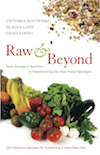Fragment from Victoria’s up-coming new book. Copyright ©2014 by V. Boutenko Please do not copy without written permission from Victoria!

Look at these two molecules and compare them:
The molecule on the left is a chemical formula of heme, oxygen carrying portion of Hemoglobin, which is an important part of human blood. The molecule on the right belongs to chlorophyll. These two molecules are very close in their structure, and the main difference is that that heme contains iron in the middle, and chlorophyll has magnesium. Obviously, green plants are vitally important for the human nutrition.
According to the USDA, 80% of Americans are magnesium deficient, and magnesium deficiency is a major contributor to our epidemic of chronic and degenerative diseases, including heart disease, osteoporosis, depression, and various autoimmune disorders. Here are some other diseases and symptoms associated with magnesium deficiency:
back Pain
chronic Fatigue Syndrome
stress and depression
 insomnia
insomnia
headaches and migraines
ischemic heart disease (angina)
hangover and alcoholism
muscle cramps and spasms
constipation
fibromyalgia
cardiac arrhythmia
osteoporosis
arthritis
diabetes
hypertension
asthma
kidney stones and gall bladder
dental caries
painful menstruation and premenstrual syndrome
processes, accelerating aging (calcification)
Eye twitching
sighing
hiccups
Indeed, magnesium is essential for humans. “The ratio of calcium to magnesium in the diets of the Paleolithic man was 1.3 to 1, but the diet that is commonly used now has shifted that ratio to 5 to 1. The worst foods that can hurt calcium-magnesium ratio are dairy products. The calcium-to-magnesium ratios found respectively in milk, yogurt and hard cheeses are 7:1, 11:1, and 26:1.”1 Even people who don’t eat dairy often still consume too much calcium with other foods or supplements. According to Ukrainian chemist Nikolay Druziak, excess calcium makes human bones brittle similar to glass, and only proper ratio of calcium to magnesium creates really strong bones.
Since each molecule of chlorophyll contains an atom of magnesium, consuming more greens is a great way to get your magnesium. Here are the greens that have the highest magnesium content.
• Swiss chard (one bunch or 340 g) contains 276 mg magnesium
• Spinach (one bunch or 340 g) contains 270 mg magnesium2
• Stinging nettles (one bunch or 340 g) contains 195 mg magnesium3
Enjoy your green smoothies!
Copyright ©2014 by V. Boutenko
Please do not copy without written permission from Victoria!

The Raw Family’s Best-Selling Book Package includes six most popular books by the Boutenkos, all for less then $69 after Internet discount.
To order click here
Warmly,
Victoria Boutenko
1. “Magnesium Deficiency: A Growing Health Crisis,” Charles Poliquin, 2009.http://www.poliquingroup.com
2. www.usda.gov
3. http://skipthepie.org/ethnic-foods/stinging-nettles-blanched-northern-plains-indians/








